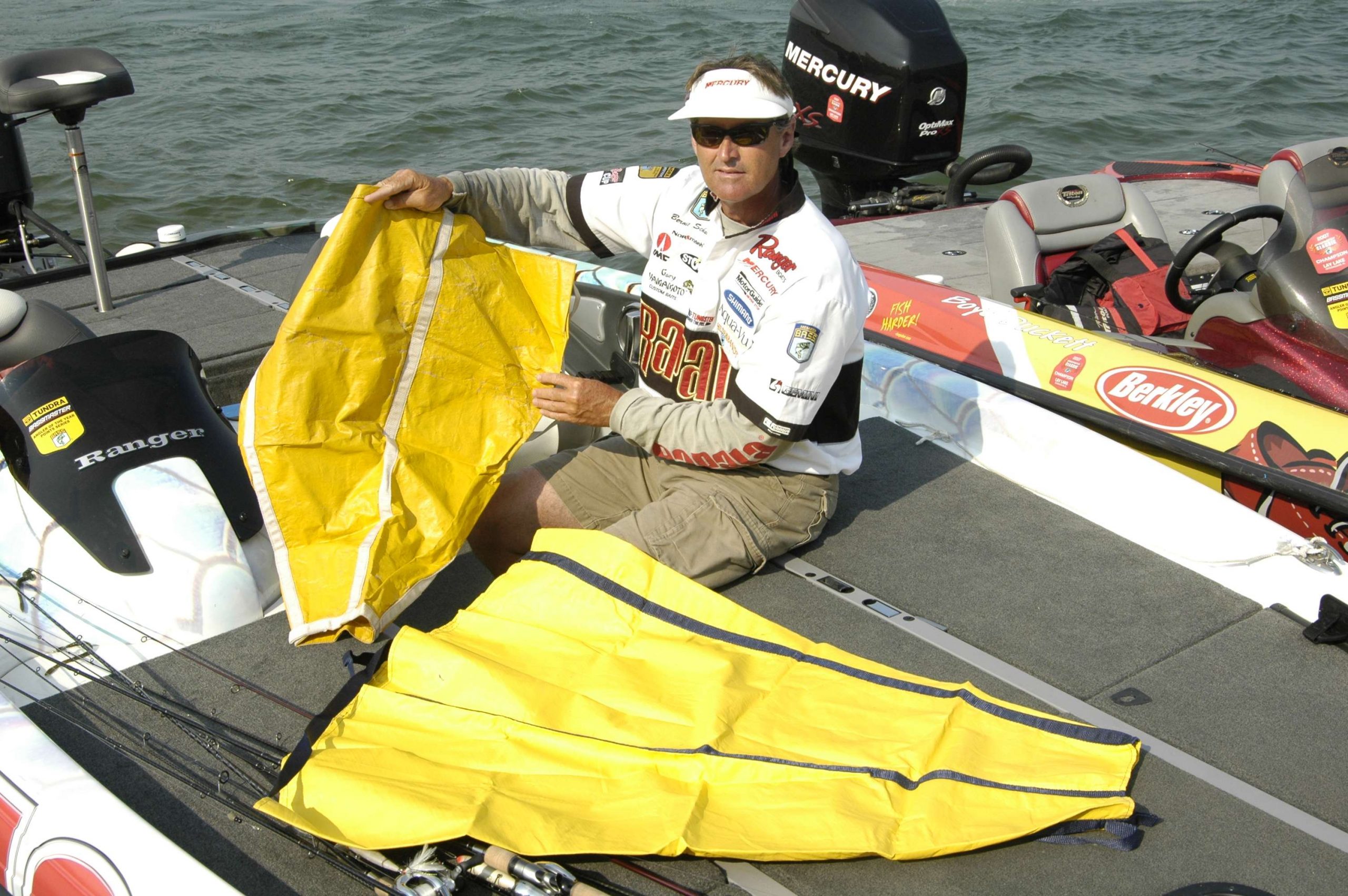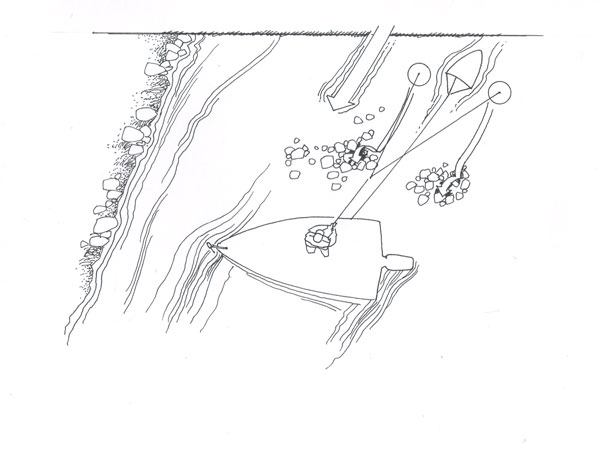
After pounding my computer keyboard for weeks to keep pace with bills, I’m finally turning my thoughts to the Bass Pro Shops Bassmaster Northern Open at Lake Erie in Sandusky, Ohio.
The first thing on my Lake Erie to-do list is: PUT THREE DRIFT SOCKS IN THE PHOENIX 721.
Why three drift socks? Cleveland, Ohio, bass pro Frank Scalish told me years ago that he always carries three drift socks in his boat when fishing Lake Erie. Scalish excels with Erie’s smallies.
Drift socks are a last resort. You dig them out when howling winds and huge waves make it impossible to hold your position with an electric motor.
Under such treacherous conditions, the only option is to idle upwind of the bass and toss out a drift sock. The sock slows the boat as it drifts over the sweet spot so your offering stays on bottom where it can tempt a bite.
If you’re fishing a small reef or rockpile, you make short drifts. Every few minutes you pull in the drift sock while trying not to fall overboard as you bounce on waves. Then you idle upwind and repeat the process. It’s the most labor-intensive bass fishing there is.
Erie can rage to the point that it takes three drift socks to slow the boat for an effective lure presentation. Doing short drifts with three socks makes bass fishing a carnival act.
I failed to take Scalish’s three-drift-sock advice when I fished a Bassmaster Open at Lake Erie five years ago. On the first day of the event, a nor’easter churned Erie into a snarling monster with 8- to 10-foot swells.
I idled upwind of a reef and tossed out the only drift sock I had with me. The wind and waves shoved the boat so fast that my 3/4-ounce football jig couldn’t stay on bottom in 12 feet of water.
The tall waves lifted and dropped my bass boat like a cork during the drift, which lasted all of two futile minutes. That was enough to make my partner seasick and hurl over the side.

Frank Scalish won the 2004 Open on Lake Erie by using a drift sock to slow his drift and targeting deep bass positioned behind isolated rockpiles. Strikes came as the lure hopped above the rocks
I often hear bass anglers that have never fished the Great Lakes talk about the rough water they’ve faced elsewhere. They glibly speak of 6- and 7-foot waves. Many of them get a reality check the first time they fish Lake Erie.
I remember a young co-angler on the weigh-in stage during a Bassmaster Northern Open at Lake Champlain. He made wide-eyed comments about the enormous 7-foot waves that nearly swamped the boat. I fished that tournament as a boater. The biggest waves I saw that day were 3 feet tall.
Let me tell you what it’s like to drive into honest-to-God, 10-foot, oncoming waves with a 21-foot bass boat. A wave that tall is usually steep. When you’re at the bottom of a trough, the boat slants up so abruptly that most of the outboard’s cowling is under water.
The top of the swell is 5 feet above your bow. You go pedal-to-the-medal to get up the incline. You feel like you’re climbing the tracks of a roller coaster for the first, dizzying, downward rush.
You must feather the throttle when your boat reaches the tipping point at the crest of the wave. It’s imperative that you gently teeter over the crest and slide slowly down the other side of the wave.
If you power over the crest, your bow lifts too high and crashes down. When that happens, you plow through the next wave and water fills your boat to the gunnels.
A bigger mistake is to back out of the throttle when you near the crest of a wave. Anglers sometimes do this when they climb a wave so steep they fear the boat is tipping over.
If you commit this sin, the boat slides backward and plunges into the bottom of the trough. The wave behind you washes over the boat and swamps it. This mishap can result in a Coast Guard rescue.
Besides three drift socks, I’ll also pack an assortment of proven Lake Erie smallmouth baits. You can catch largemouths in the bays and harbors off Lake Erie, but you can’t win with green bass. I’ll be fishing the big water for brown bass. Period.
Tubes in green and brown hues have long been a smallmouth mainstay on Erie. However, these days, drop shotting is the number one tactic.
You can’t go wrong drop shotting Berkley Gulp! baits. I’ve also done well with 4-inch YUM Dingers, both nose-hooked and wacky rigged, and 6-inch lizards. Finesse worms and goby imitators are also proven producers.
I’ll have a jerkbait tied on but this bait usually does better earlier in the year. Two years ago Jonathon VanDam won a Bassmaster Open at Lake Erie’s Western Basin on deep diving crankbaits. That was almost unheard of. Now you’d be an idiot not to have a selection of deep divers with you.
A 3/4-ounce football jig is one of my favorite Lake Erie baits. It shines when rough seas muddy the water. Grinding the jig over zebra mussels helps the bass find the bait in the murky water.
Don’t rule out spinnerbaits and topwater plugs. Under the right conditions, they can also draw strikes from heavy brown bass.
And the bass you catch will need to be heavy to have any hope of winning here. It typically takes 20 pounds or more a day to be a contender. On the final day of the tournament that VanDam won, he brought in 25 pounds.
As for where to fish, this tournament could be won from 50 miles east of Sandusky, Ohio, west to Michigan waters, north to the Canadian shore and anywhere within that massive area. The winning fish could come from depths ranging from 10 to 25 feet or more.
The key is finding clusters of big bass. You might have a ball catching a slew of 2 1/2- to 3 1/2-pounders. But if you’re not handling brown bass that weigh 4 pounds or more, you won’t be fishing on Saturday.

